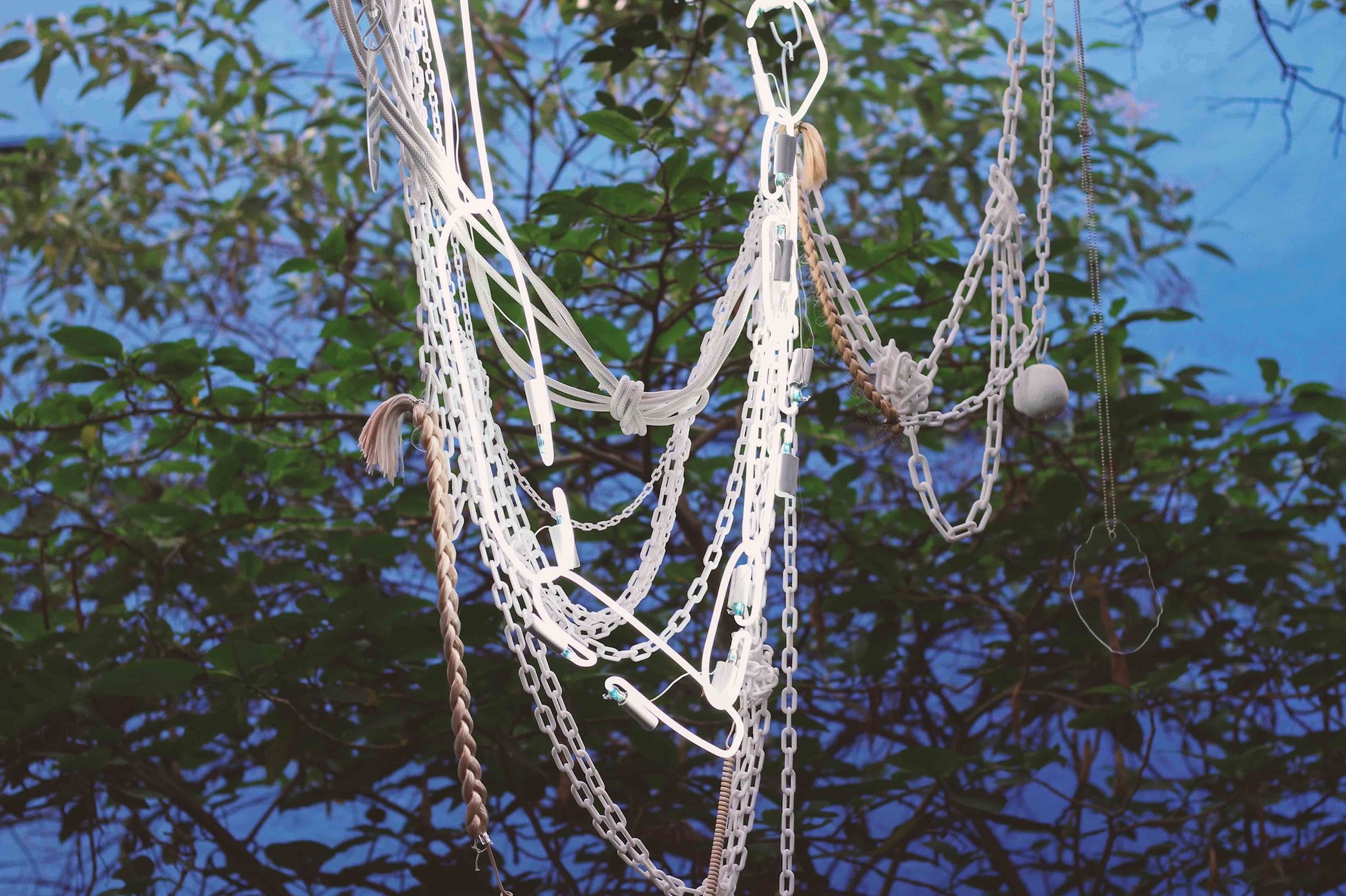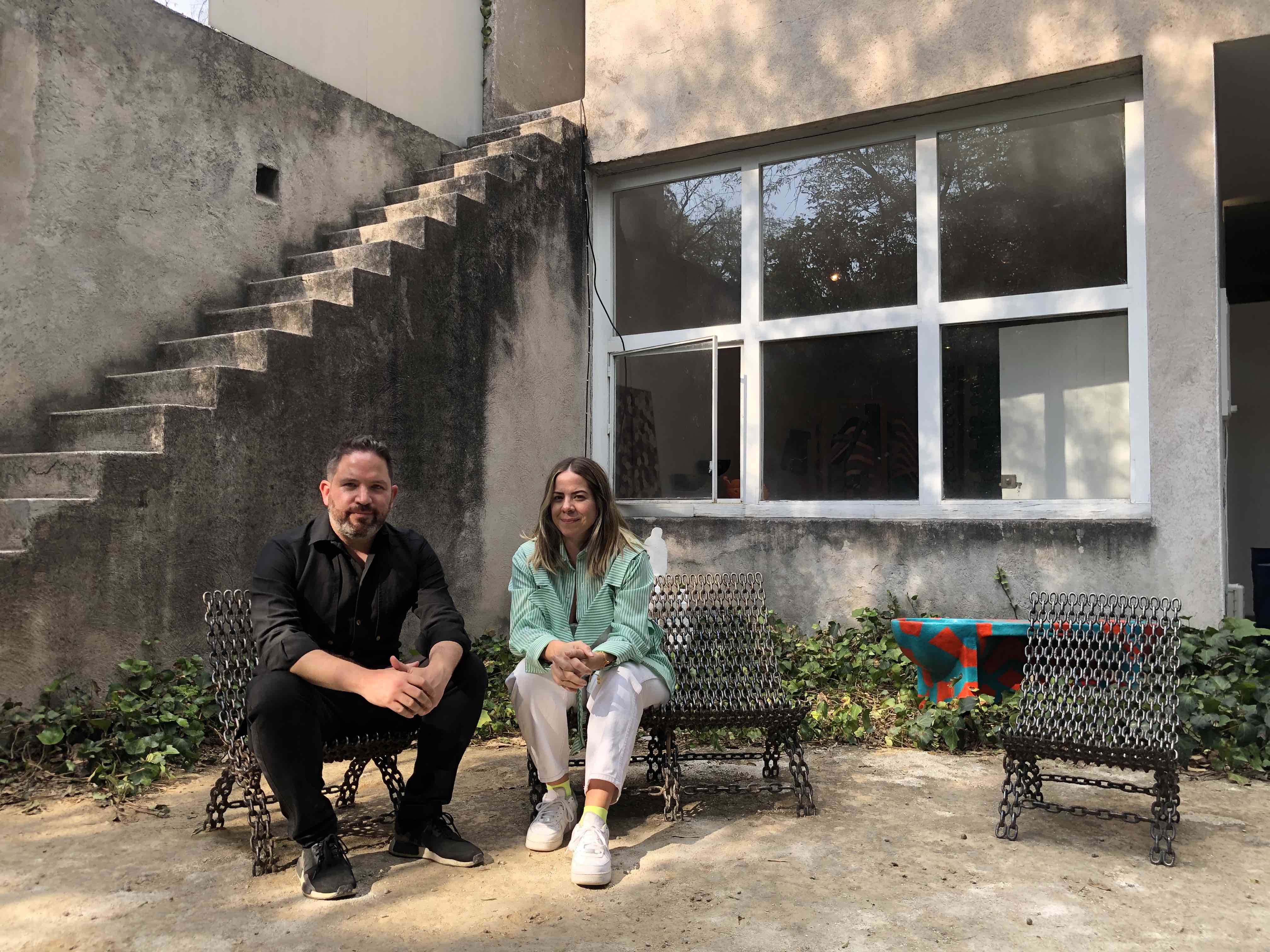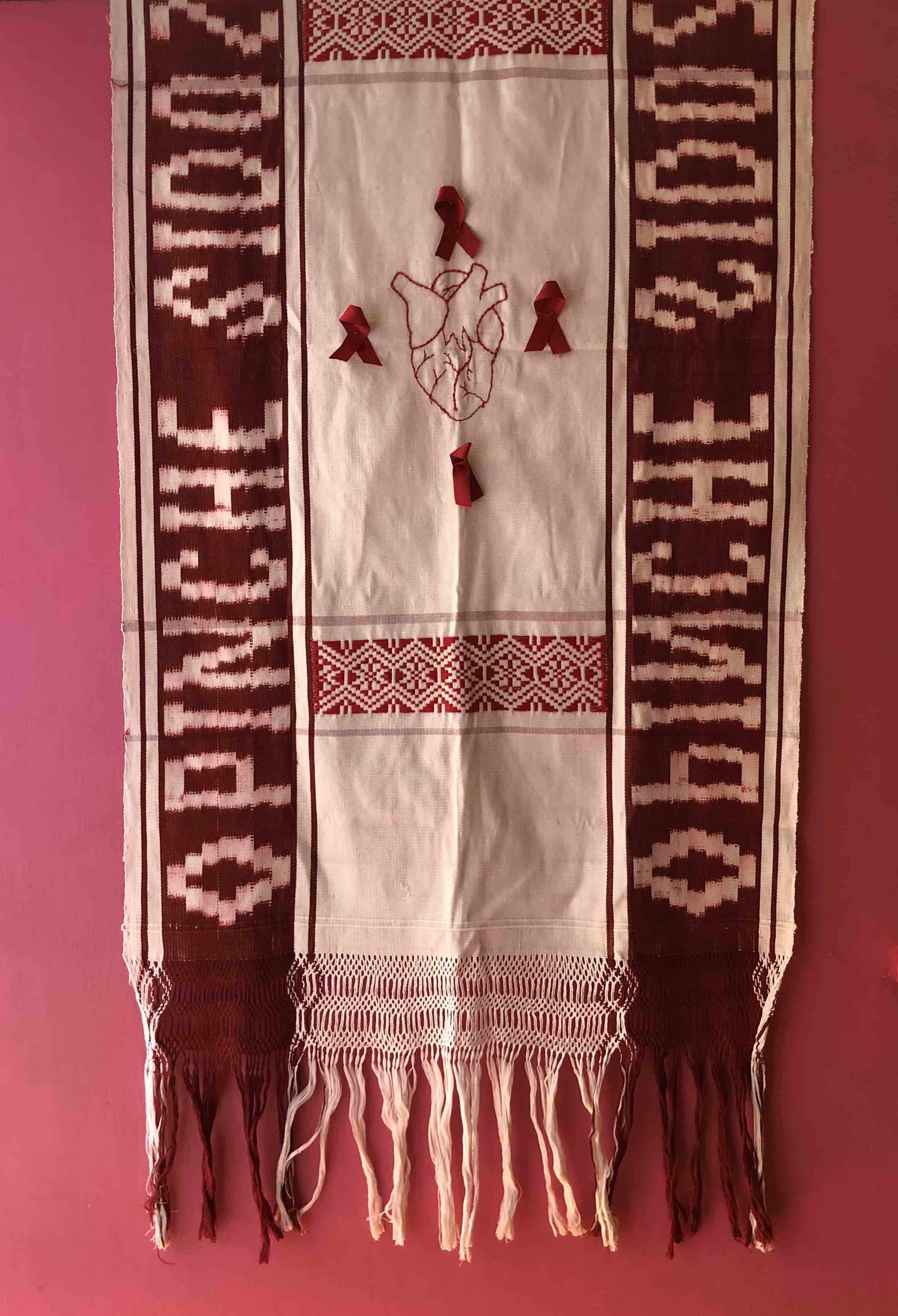
Interview
Salón Cosa vs. the archaic division between design, art, and craft
by Ricardo Quiroga
No to “New Normal,” Yes to “Non-Normal”
Reading time
7 min
“We usually condemn objects with rules of legitimation and credibility; the time has come to break with the condemnation that comes with labels,” say Salón Cosa’s creators, Daniela Elbahara and Mario Ballesteros. “It's like visiting the house of an eccentric collector with their finger on the pulse of creation,” all within Casa Barragán.
A thing is said to be all that exists or has an entity, whether material or immaterial, real or imaginary, concrete or abstract. It’s a very broad concept, unthinkable within the contemporary spirit of cataloguing everything in the art market in order to assign status or value.
After having learned about Salón Cosa and having conversed with its managers, I dare to add that the concept “thing” (cosa) is relevant and democratic if what you want is to break the stigmas of particularity, the subordination of disciplines and the hierarchy of objects, based on criteria as alien to the creative act as the gallery backing the art piece, the name and biography of the creator, or the considerable sums of money paid for a creative object to be made out of the space of an art fair or biennial.
The issue (or the thing) is that since April 29 the model workshop and garden at Casa Luis Barragán in Mexico City have been taken over by the inadvertent Salón Cosa: a long-term gathering that, within the framework of Mexico City’s Art Week, has brought together contemporary objects with the promise of a divergent approach, alien to the established circuits of production, exhibition, and commercialization, without hierarchical or categorical divisions across disciplines.
Salón Cosa is product of a collaboration between curator, editor, and design specialist Mario Ballesteros, who from 2015 to 2019 was director and chief curator of Archivo Diseño y Arquitectura, and the contemporary gallery owner and cultural manager Daniela Elbahara, founder and co-director of Material Art Fair from 2013 to 2017.

For this first edition, the organizers managed to gather together some 50 pieces from 30 creators, including artists, artisans, designers, and architects—both emerging and consolidated—who did not pay participation fees and who were selected solely for their proposals. It seems like a revival of cabinets of curiosities from the 16th to 18th centuries, but in this case with extraordinary objects of our time, ones that replace the “new normal” with the “non-normal.” The chosen objects are under reservation. Daniela and Mario appeal to the factor of surprise.
How is Salón Cosa created? Does it identify a gap to be filled in the market?
Mario: There’s an aim to break with the categorical dimensions between creative disciplines. From our trenches, Daniela and I have both tried to go against that hierarchical notion or categorical closure that takes place in both art and design. Designers are reluctant to consider themselves artists or are in opposition to what is not design, and contemporary art has a vision of design as something minor.
For us, these divisions are archaic, as is the feeling that these are established hierarchies between design, art, architecture, and crafts, especially because we are very interested in bringing crafts to the table and considering them a very relevant contemporary creative sphere in Mexico.
Are there really functional criteria for distinguishing between design, crafts, and art?
Daniela: The contemporary art world is very jealous and has its rules, but in many cases those rules are quite well-articulated. It’s something that Mario and I have been discussing over the years: we usually condemn the labels we put on things because they make us abide by those rules of legitimacy and credibility. And the time has come to be conscious. Everything is an art, really.
How did the search for and selection of objects and creators come about?
Mario: Both of us, within our circles, were very aware of who’s who, what’s being done, who hasn’t managed to enter the circuits. Daniela and I already had our roosters picked out, but Salón Cosa isn’t self-absorbed. We’ve sought out emerging talent. We’re excited, moved, and passionate about propelling new, different voices. There’s been a very serious and quite well-informed search.
What’s surprising is that many of them proposed new work for Salón. With all the limitations of time and resources we didn’t think that anything new would be launched, but we’re pleased to announce that it’s the first time exhibiting the vast majority of the pieces. It’s a moment for releasing energy accumulated during the pandemic.
.jpg?alt=media&token=7def4abd-cf12-46c2-94aa-36568e168bf2)
Which artists or pieces can we expect from this first edition?
Daniela: We’re showing the B-sides of many of the creators. That’s the case with Bárbara Sánchez-Kane, who’s a fashion designer but who suddenly wanted to work on a series of chairs. That’s also the case with Esteban Tamayo, who’s now showing some chairs made with discarded technological material that have already created a sensation in the design world.
There are some artists who are already valued in the art world, like José León Cerrillo, who’s exhibited at MoMA PS1 and who’s now made a couple of interesting chairs that reinterpret Barragán’s “Miguelitos.”
Mario: There’s a creator named Puki. A young person from Michoacán, a rebozo weaver, who identifies as non-binary. They bring with them a whole discourse around identity and sexuality, transmitted through their rebozos.

What about the pieces’ distribution, the way they’re presented? Will it also be different from a fair?
Daniela: It’s got nothing to do with a fair. Hierarchies don’t exist, nor do stands or booths. There won’t even be cards for the pieces or the artists. The idea is that they coexist in the spaces. Mario’s generating small moods, very much in the style of Barragán, but with the pieces from Salón Cosa. It’s like going to the house of an eccentric collector who has their finger on the pulse when it comes to art and design.
Mario: Not charging creators to enter is part of the aim of fostering a different market for these types of collectibles. It’s very hard to know where an overview is; that’s why there are no collectors of contemporary art in Mexico—because the framework doesn’t encourage it, and in fact makes it rather difficult.
Will there be a program for discussing the concept “thing” (cosa)? And for discussing the ways in which the project’s aim is to be extended to interested parties who aren’t currently involved?
Mario: Without a doubt we aim to fulfill a program with the subjects and people that interest us. But we want to extend the Cosa experience beyond this event. Most likely we’ll integrate the discussion program between one edition and another. We’re so crazy that we’re considering doing a second edition at the end of this year.
Daniela: In addition, we want the next edition to be in another city. We want to generate content between one and the other so that the aim persists and in the next one there’ll be more people who are somewhat informed about it. There’ll be a virtual space for seeing the exhibition and it’ll be up for three months in case anyone, for any reason whatever, can’t attend. We also anticipate that the exhibition will remain open to the public a couple weeks after the event.
— Ricardo Quiroga
Translated to English by Byron Davies
Salón Cosa presented at Jardín 17 Casa Barragán will be open until May 18th, by appointment.
Cover picture: Piece by Luis Úrculo, Salón Cosa 2021. Photo: @eriklopez.xyz
Published on May 9 2021